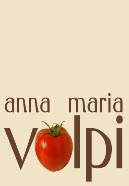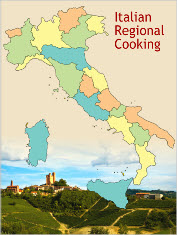


JOIN NOW
our Italian Cooking
Newsletter
our Italian Cooking
Newsletter





Publication or use of pictures, recipes, articles, or any other material form my Web site, on or off-line without written permission from the author is prohibited. If you would like to use my articles on your Web site or in your publication, contact me for details. Avoid infringing copyright law and its consequences: read the article 7 Online Copyright Myths by Judith Kallos
Read our
DISCLAIMER and
PRIVACY POLICY
before using
our site
-------------------
Linking Policy
Advertise with us
DISCLAIMER and
PRIVACY POLICY
before using
our site
-
Advertise with us
Copyright © 2003 - 2011 Anna Maria Volpi - All Rights reserved.
Anna Maria's Open Kitchen Site Map
site map
recipes
policies
about us
Some More Hot Topics You'd Like to See adv.
Southern Italy has had a complex history. Naples was the capital of southern Italy for centuries, and it is famous for its pizza, pasta, and tomatoes. The Calabria and Lucania regions, mountainous areas where life remains simple and frugal, contrast with the Apulia region, a flat agricultural land where produce and pasta prevail.

In Naples and the Campania region, there is evident Spanish or French influence, like in sartu’ (rice timbale filled with peas and meat balls), ragu’ (thick tomato sauce), and gatto’ (potato casserole), side by side with an extensive cuisine of seafood.
Two dishes of the poor, pizza and pasta, became extraordinarily successful. Both dishes have traveled successfully with Italian emigrants, establishing roots all over the world, and pasta in particular has become a dominant phenomenon in Italian cooking culture.
At the basis of Neapolitan cooking is an ingredient that deserves a separate chapter for itself: the tomato. We cannot think of cooking Italian today without it. In the Campania region, the quality is excellent and a large industry flourishes producing tomatoes—canned, whole, or concentrated.
The Calabria region has the shape of a long peninsula with a mountainous spine. The region flourished in ancient times when the Greeks established colonies there. The cooking is represented by simple dishes dating back to a disappearing, ancient lifestyle of pastoral living.
Lucania got its name from the Lucanians, the initial inhabitants of the land. The other name of the region, Basilicata, dates back to Byzantine domination. Basileus is the Greek word for king, implying that it was a province of the Byzantine Empire. The kitchen still reflects the traditions of the original people, who were shepherds and hunters. All these ancient foods contrast with other dishes flavored with the decadent Byzantine influence of cinnamon and saffron.
The Apulian cuisine is quite different from that of its neighbors. Apulia is a flat land rich in wheat and vegetables. The abundance of vegetables and fish make these ingredients predominant in the diet of the region, even more than meat. The region is renowned for its dishes of mussels and oysters, as well as crustaceans and mollusks in general. Pasta dough is very common, showing up in many shapes made simply with flour and water and without eggs. There is also the famous orecchiette, little handmade ear-shaped pasta, which are dressed with all kinds of vegetables or sauces.
© www.annamariavolpi.com
Two dishes of the poor, pizza and pasta, became extraordinarily successful. Both dishes have traveled successfully with Italian emigrants, establishing roots all over the world, and pasta in particular has become a dominant phenomenon in Italian cooking culture.
At the basis of Neapolitan cooking is an ingredient that deserves a separate chapter for itself: the tomato. We cannot think of cooking Italian today without it. In the Campania region, the quality is excellent and a large industry flourishes producing tomatoes—canned, whole, or concentrated.
The Calabria region has the shape of a long peninsula with a mountainous spine. The region flourished in ancient times when the Greeks established colonies there. The cooking is represented by simple dishes dating back to a disappearing, ancient lifestyle of pastoral living.
Lucania got its name from the Lucanians, the initial inhabitants of the land. The other name of the region, Basilicata, dates back to Byzantine domination. Basileus is the Greek word for king, implying that it was a province of the Byzantine Empire. The kitchen still reflects the traditions of the original people, who were shepherds and hunters. All these ancient foods contrast with other dishes flavored with the decadent Byzantine influence of cinnamon and saffron.
The Apulian cuisine is quite different from that of its neighbors. Apulia is a flat land rich in wheat and vegetables. The abundance of vegetables and fish make these ingredients predominant in the diet of the region, even more than meat. The region is renowned for its dishes of mussels and oysters, as well as crustaceans and mollusks in general. Pasta dough is very common, showing up in many shapes made simply with flour and water and without eggs. There is also the famous orecchiette, little handmade ear-
© www.annamariavolpi.com
Southern Italian Cooking



Southern
Italian
Cooking
Italian
Cooking
Southern Italy is very different from the regions of the north and the center. The predominant presence of the sea makes it a truly Mediterranean territory. The cuisine is rich in piquant food, tomatoes, eggplant, olives, lamb, and fish.
Macaroni Seller on a Naples Street. Macaroni was a staple for Neapolitan people in the seventeenth and eighteenth centuries. A French traveler around 1850 wrote, “A man of the people goes to a macaroni merchant; he gets a dish full of this boiling pasta and throws on it a handful of grated cheese; he takes these macaronis with his hands and twists them in a way that a foreigner could rarely imitate.”
A SUMMER MENU IN SOUTHERN ITALY










